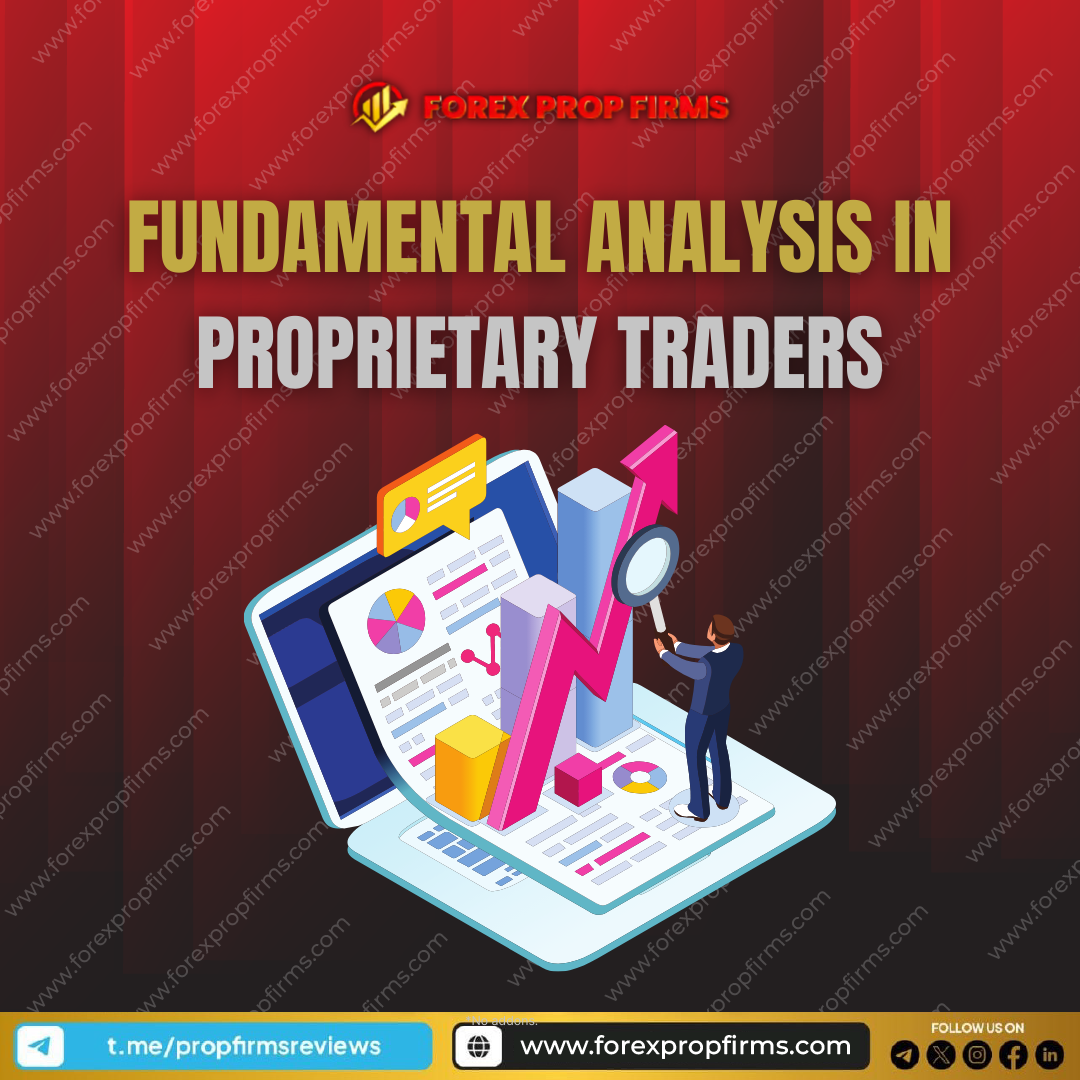
Fundamental analysis plays a crucial role in proprietary trading by focusing on the intrinsic value of assets and the underlying factors that drive their prices. This blog post explores how proprietary traders can utilize fundamental analysis, and economic indicators, and build a robust trading strategy based on these insights.
Understanding Fundamental Analysis
Fundamental analysis involves evaluating the financial health, performance, and future prospects of a company or asset. Unlike technical analysis, which focuses on price movements and historical data, fundamental analysis examines qualitative and quantitative factors to determine the intrinsic value of an asset.
- Key Components of Fundamental Analysis
- Economic Indicators: Economic indicators such as GDP growth rates, inflation, employment figures, and consumer spending provide insights into the overall health of the economy. Proprietary traders analyze these indicators to gauge economic trends and their impact on asset prices.
- Financial Statements: Analyzing a company’s financial statements, including balance sheets, income statements, and cash flow statements, helps traders assess its financial health, profitability, and potential for growth.
- Industry Trends: Understanding industry-specific trends, regulatory developments, and competitive landscape helps traders assess the growth potential and competitive positioning of companies within the sector.
Trading Based on Economic Data
Using economic data for trading decisions involves interpreting how macroeconomic trends and events influence asset prices. Here are some ways proprietary traders leverage economic data:
- Interest Rates and Monetary Policy
- Central banks’ decisions on interest rates and monetary policy have a significant impact on currency markets, bond yields, and equity prices. Traders monitor interest rate announcements and central bank meetings to anticipate market reactions and adjust their positions accordingly.
- Economic Releases
- Scheduled economic releases, such as employment reports, consumer confidence surveys, and GDP announcements, provide real-time data on economic performance. Traders analyze these releases to assess economic strength or weakness and adjust their trading strategies based on the outcomes.
- Sector Rotation
- Proprietary traders often engage in sector rotation strategies, shifting investments between sectors based on economic trends and industry performance. For example, during periods of economic expansion, cyclical sectors like technology and consumer discretionary may outperform defensive sectors like utilities and healthcare.
Building a Trading Strategy for Proprietary Trading
Building a successful trading strategy in proprietary trading requires integrating fundamental analysis with technical analysis and risk management principles. Here’s how traders can develop a comprehensive approach:
- Define Investment Goals and Risk Tolerance
- Clarify your investment objectives, whether it’s capital growth, income generation, or risk mitigation. Assess your risk tolerance to determine the level of risk you’re comfortable with in your trading activities.
- Conduct Thorough Research
- Research potential investment opportunities using fundamental analysis tools and economic insights. Evaluate company fundamentals, industry trends, and macroeconomic factors to identify undervalued or overvalued assets.
- Implement Risk Management Strategies
- Implement risk management techniques, such as setting stop-loss orders, diversifying your portfolio, and managing position sizes based on risk-reward ratios. Protecting capital is essential in proprietary trading to withstand market fluctuations and preserve profitability.
Conclusion
By incorporating fundamental analysis into your proprietary trading strategy, you can gain a deeper understanding of market dynamics, identify investment opportunities based on economic data, and make informed trading decisions. Whether you’re analyzing economic indicators, interpreting financial statements, or building a diversified portfolio, fundamental analysis provides a solid foundation for achieving long-term success in proprietary trading.
Encouraging User Engagement
We value your feedback! Share your experiences with fundamental analysis and building trading strategies in proprietary trading in the comments below. If you found these tips helpful, consider sharing this article with your fellow traders. Your insights contribute to our trading community’s growth and learning.
Embracing fundamental analysis in proprietary trading empowers traders to navigate markets with confidence and insight. Start integrating economic data into your trading decisions today and unlock new opportunities for profitability and growth. Happy trading!
Learn more about Technical Analysis Tools
Looking for the latest Prop Firms updates?
Follow our official social channels and never miss a bit!





 GiiMer Trading Competition: A Risk-Free Way to Prove Your Skills and Win Big!
GiiMer Trading Competition: A Risk-Free Way to Prove Your Skills and Win Big!








 for
for